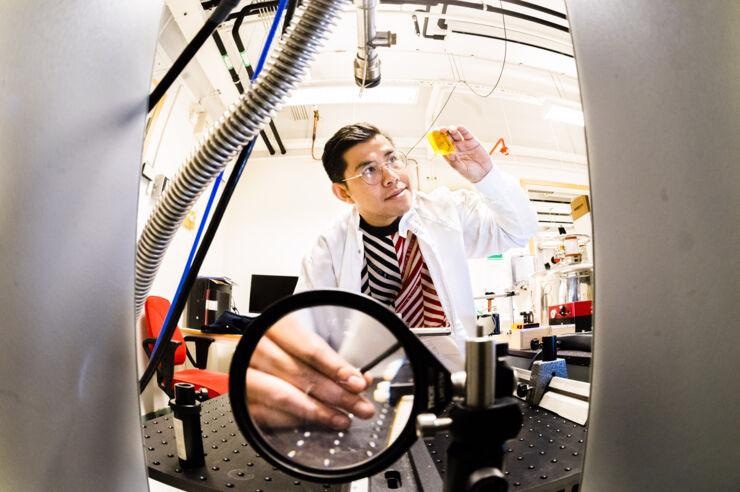Mar 11 2021
Solar energy is considered one of the most significant eco-friendly and fossil-free sustainable sources of electricity. The existing silicon-based solar cells use only around 33% of the energy in sunlight and transform it into electricity.
 View from the inside of the magneto-optic instrument which helps Yuttapoom Puttisong and his team to develop a protocol in searching for energy loss in singlet fission. Image Credit: Thor Balkhed.
View from the inside of the magneto-optic instrument which helps Yuttapoom Puttisong and his team to develop a protocol in searching for energy loss in singlet fission. Image Credit: Thor Balkhed.
The reason is the packets of light, or photons, present in the sun’s beams possess energy that is either too little to be absorbed by the solar cell, or too high, such that part of the energy is released as waste heat. This optimum theoretical efficiency is called the Shockley-Queisser limit.
Practically, the efficiency of modern solar cells ranges from 20% to 25%
But a phenomenon in molecular photophysics called singlet fission can enable photons with higher energy to be utilized and transformed into electricity without any heat loss. In the past few years, singlet fission has gained higher attention from researchers, and intense activity is in progress to develop the ideal material.
But so far, unexplained energy losses at the time of singlet fission have made it hard to design such a material. Scientists have not yet arrived at a consensus on the origin of such energy losses.
Less than a Nanosecond
Currently, scientists from Linköping University, along with collaborators in Cambridge, Barcelona, Donostia and Oxford, have identified where the energy goes during singlet fission.
Singlet fission takes place in less than a nanosecond, and this makes it extremely difficult to measure. Our discovery allows us to open the black box and see where the energy goes during the reaction. In this way we will eventually be able to optimise the material to increase the efficiency of solar cells.
Yuttapoom Puttisong, Senior Lecturer, Department of Physics, Chemistry and Biology, Linköping University
A portion of the energy vanishes in the form of an intermediate bright state, and this is an issue that must be overcome to realize efficient singlet fission.
Finding where the energy vanishes is a crucial step on the path toward considerably higher solar cell efficiency—from the existing 33% to more than 40%
Optimize the Material
The team employed a refined magneto-optical transient technique to determine the location of energy loss.
This method has special benefits: it can analyze the 'fingerprint' of the singlet fission reaction at a nanosecond timescale. The researchers used a monoclinic crystal of a polyene diphenyl hexatriene (DPH) in this study.
But the new method can be employed to investigate singlet fission in a broader range of materials.
The actual singlet fission process takes place in the crystalline material. If we can optimise this material to retain as much as possible of the energy from the singlet fission, we will be significantly closer to application in practice. In addition, the singlet fission material is solution processable, which makes it cheap to manufacture and suitable for integration with existing solar cell technology.
Yuqing Huang, Former Doctoral Student, Linköping University
Huang is the first author of the article published in Cell Reports Physical Science, a newly launched journal.
The study was financially supported mainly by the Swedish Research Council and the Knut and Alice Wallenberg Foundation.
Journal Reference:
Huang, Y., et al. (2021) Competition between triplet pair formation and excimer-like recombination controls singlet fission yield. Cell Reports Physical Science. doi.org/10.1016/j.xcrp.2021.100339.